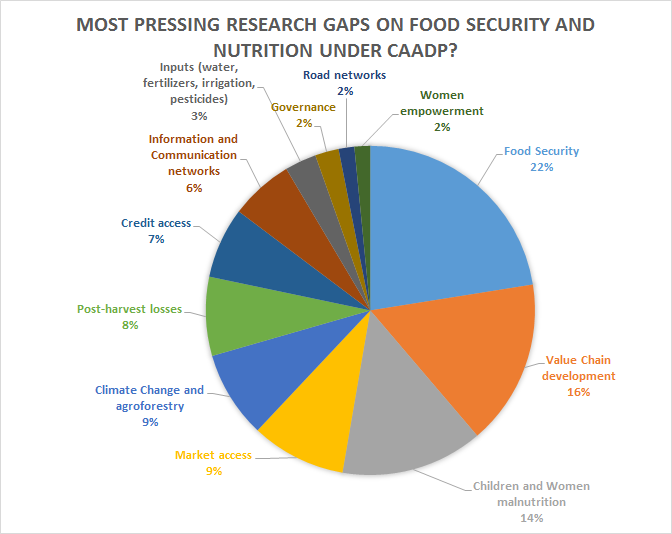
The April 2016 meeting of the CAADP Partnership Platform called for renewed efforts to meet the 2003 Maputo commitment to invest at least 10% of public budgets in agriculture, as reiterated in the 2014 Malabo Declaration. Mainstreaming nutrition in the National Agricultural Investment Strategies has been a goal for regional planners but a number of knowledge gaps still exist. Research has shown that CAADP has been successful in improving the effectiveness and transparency of agricultural policy-making in Africa, increasing the political cachet of the agricultural sector, and promoting greater participation by multiple state and non-state actors in the agricultural policy dialogue. [1]
Many countries have incorporated food and nutrition security as a larger component of their CAADP National Agricultural and Food Security Investment Plans, and the latest AGRA Africa Agriculture Status Report shows evidence that the CAADP has helped to lower malnutrition in the region. Countries that have adopted the CAADP process have seen annual declines in malnutrition between 2.4 and 5.7 percent, while countries that have not adopted CAADP have only seen declines of 1.2 percent over the past decade. Finally, the CAADP Results Framework calls for a systematic review process of the progress made under CAADP on a variety of development outcomes, including food security and nutrition.
One of the key indicators of progress in implementing the CAADP framework is membership in the New Alliance for Food Security and Nutrition and Grow Africa partnerships. According to Chapter 9 of the 2014 ReSAKKS Annual Trends and Outlook Report, as of as of July 2015, 10 African countries had signed cooperation agreements under this initiative. However, even with these agreements in place, many countries still face challenges in actually implementing the CAADP framework. In addition, with the exception of the latest AGRA report, there remains a dearth of research into how CAADP processes actually incorporate and impact food and nutrition security in the region.
As part of the Food Security Portal for Africa South of the Sahara , we organized a side event at the upcoming ReSAKSS meeting on October 18 in Accra, Ghana entitled “Research Gaps for Food and Nutrition Security under CAADP”. This side event aims to bring together a range of researchers and project managers focused on nutrition programs under CAADP. The main objective of the event was to identify research gaps that still exist and share experiences that can help better understand why there appear to be mixed results for nutrition under CAADP implementation. The panelists discussed what they consider to be research priorities under CAADP, based on their varying experiences and expertise. This panel also expanded and commented on the results of a poll on this topic conducted through the Food Security Portal . The results of the poll are as follows:
Panelists for the side event were:
- Máximo Torero, Director, Markets, Trade & Institutions Division, IFPRI
- Komla Bissi, CAADP Pillar II Adviser, Rural Economy and Agriculture Department, AUC
- Karen Chenda Mukuka, Chief Food and Nutrition Officer, Ministry of Agriculture and Cooperatives, Zambia
- Richmond Aryeetey, Senior Lecturer, School of Public Health, University of Ghana,
- Namukolo Covic, Research Coordinator, Poverty Health and Nutrition Division, IFPRI
Poll for Research Gaps under CAADP
For more information, please contact Summer Allen at s.allen@cgiar.org .
[1] Benin, S. 2016. “Impacts of CAADP on Africa’s Agricultural-Led Development.” IFPRI Discussion Paper. Washington DC: International Food Policy Research Institute.
